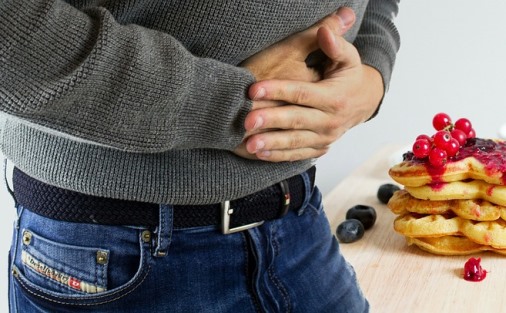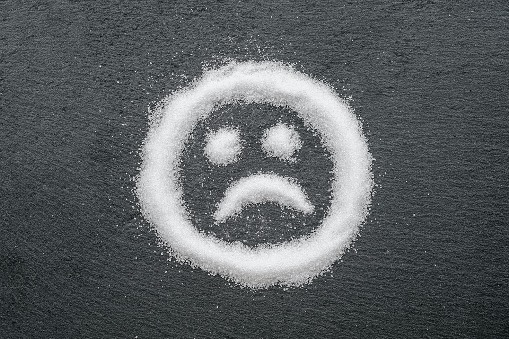HYPERTENSION OVERVIEW
Hypertension, or high blood pressure, occurs when the force of blood against the walls of the arteries is consistently too high. It is often called the “silent killer” because it can have no noticeable symptoms while causing damage to vital organs over time. Left uncontrolled, hypertension can lead to heart disease, stroke, kidney problems, and other serious health issues. It is a medical condition in which the blood pressure persistently gets elevated above the normal condition i.e. above 140/90 (mmHg).
Complications casued by Hypertension:
Severe hypertension will leads to congestive heart failure, stroke, cardiac arrhythmias, haemorrhage, memory loss, retinopathy, chronic kidney diseases and major risk factor for heart attacks.
SYMPTOMS OF HYPERTENSION
People suffering from hypertension generally come across following conditions which are typical symptoms of Hypertension:
- Constant Headache,
- Tinnitus (buzzing and hissing in the ears)
- Altered vision,
- Palpitation,
- Occipital Headache,
- Dizziness and
- Fainting episodes.
CAUSES OF HYPERTENSION
Understanding the causes and risk factors is essential for effective hypertension management:
Lifestyle Factors: Unhealthy eating habits, lack of physical activity, excessive salt intake, and alcohol consumption can contribute to hypertension.
Genetics: Family history can play a role in developing high blood pressure.
Obesity: Being overweight increases the risk of hypertension.
Stress: Chronic stress and anxiety can elevate blood pressure levels.
Chronic Conditions: Conditions like diabetes and kidney disease can lead to hypertension.
PREVENTION OF HYPERTENSION
Preventing hypertension involves adopting a holistic approach to a healthier lifestyle:
Healthy Diet: Embrace a diet rich in fruits, vegetables, whole grains, lean proteins, and low-fat dairy products. Reduce salt and processed food intake.
Regular Exercise: Engage in regular physical activity, such as brisk walking, swimming, or cycling, to help control weight and reduce blood pressure.
Stress Management: Practice stress-reduction techniques like meditation, deep breathing exercises, or yoga.
Limit Alcohol: Consume alcohol in moderation or avoid it altogether.
Quit Smoking: If you smoke, quitting can significantly improve blood pressure and overall health.
DIAGNOSIS FOR HYPERTENSION
Accurate diagnosis is crucial for hypertension management:
Blood Pressure Measurement: Regular monitoring of blood pressure is essential. Hypertension is defined as a consistently elevated blood pressure reading of 130/80 mm Hg or higher.
Medical History: Understanding your medical history and family history helps in assessing risk factors.
Blood Tests: These can evaluate kidney function, cholesterol levels, and other potential underlying causes.
HYPERTENSION MANAGEMENT BY DR MONGA MEDI CLINIC
At Dr. Monga Medi Clinic, we are dedicated to providing comprehensive care and promoting overall well-being through an integrated and holistic approach to hypertension management. In this guide, we will explore hypertension, its causes, risks, prevention strategies, diagnosis, treatment options, and the holistic methods we employ to help our patients maintain healthy blood pressure levels.
Hypertension, commonly known as high blood pressure, is a widespread health concern with serious consequences if left untreated. We believe in a holistic approach to hypertension management, addressing the root causes and promoting overall well-being:
Dietary Guidance: Personalized dietary plans that incorporate foods known to lower blood pressure.
Nutritional Supplements: When necessary, supplements like potassium, magnesium, and omega-3 fatty acids may be recommended.
Herbal Medicine: Utilization of Ayurvedic and herbal remedies that have shown promise in supporting blood pressure regulation.
Stress Reduction: Incorporation of stress-reduction techniques, including mindfulness, yoga, and relaxation exercises.
Regular Monitoring: Consistent blood pressure monitoring to ensure treatment effectiveness.
HYPERTENSION MANAGEMENT THROUGH AYURVEDA
Hypertension is known as RaktaGataVata or VataPradhanTridoshaja in Ayurveda. The food we eat is digested by ourdigestive fire (jatharagni) to produce nutrient plasma. This plasma nourishes all other dhatusand aids in production of healthy blood which circulates all over the body through various srotas, but impaired digestion due to intake of unhealthy food leads to accumulation of ama (toxins) which further leads to hypertension.
Herbal Remedies
Some of the herbs used in the treatment of hypertension are mentioned as:
- Hibiscus sabdariffa: The leaves, calyx of this plant provides anti-hypertensive effect through direct reduction of tension in the wall of blood vessels.
- Cassia occidentalis (coffee weed): The leaf extract of this plant reduces high BP by inhibiting calcium (Ca2+) influx.
- Zingiberofficinale (ginger): It improves blood circulation and relaxes muscles surrounding blood vessels which lead to reduction of BP.
- Linumusitatissimum (commonly known as Linseed): Oil (α- linolenic acid) is present as omega-3 fatty acids which helps in lowering BP.
- Theobroma cacao (Chocolate, Cocoa bean) is enriched with flavonoids stimulate formation of nitric acid, which lowers systolic as well as diastolic BP.
- Daucuscarota (carrot): Two coumarin glycosides isolated from carrot helps in reducing arterial BP.
- Ocimumbasilium (tulsi): Crude extract of tulsi reduce systolic, diastolic, and mean BP in a dose dependent manner.
- M-Sarpagandhamishran: It is a combination of herbal ingredients having normotensive activity is used as anti-hypertensive agent.
FREQUENTLY ASKED QUESTIONS
A blood pressure is said to be normal if it reads as 120/80.
The top (systolic) number is the pressure when heart beats and bottom (diastolic) number is pressure when heart rests between beats.
It is dangerous because it makes heart work too hard and contributes to atherosclerosis (hardening of the arteries).Hypertension may be a high risk factor for coronary artery disease, stroke and heart failure.
Hypertension is often called the “silent killer” because it typically has no noticeable symptoms. Some individuals may experience headaches, nosebleeds, or dizziness, but these are not reliable indicators of high blood pressure. Regular blood pressure checks are essential for diagnosis.
You can check your blood pressure at home using a home blood pressure monitor. It’s important to follow the manufacturer’s instructions for accurate readings. The frequency of monitoring may vary depending on your doctor’s recommendations, but it’s typically done several times a week or as advised by your healthcare provider.
In many cases, lifestyle modifications such as a healthy diet, regular exercise, stress reduction, and limiting alcohol and sodium intake can effectively manage hypertension. However, some individuals may require medication in addition to lifestyle changes, depending on the severity of their condition.
Yes, dietary changes can have a significant impact on blood pressure. A diet rich in fruits, vegetables, whole grains, lean proteins, and low-fat dairy products, known as the DASH (Dietary Approaches to Stop Hypertension) diet, has been shown to lower blood pressure. Reducing sodium intake and increasing potassium-rich foods can also be beneficial.
Some natural remedies and supplements, such as garlic, hibiscus tea, and certain herbal supplements, have shown promise in supporting blood pressure regulation. However, it’s essential to consult with a healthcare provider before taking any supplements, as they can interact with medications or have side effects.
Hypertension is typically a lifelong condition that requires ongoing management. While it can be controlled and managed effectively, it often requires lifestyle changes and, in some cases, medication to maintain healthy blood pressure levels.
Yes, regular exercise is generally safe and highly recommended for individuals with hypertension. However, it’s crucial to start slowly and consult with a healthcare provider before beginning an exercise program, especially if blood pressure levels are significantly elevated.











